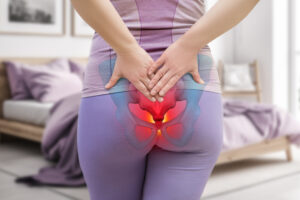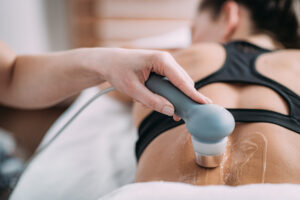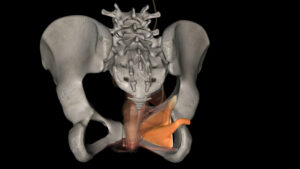🎥 Chapters
00:00 Introduction to the Obturator Internus Muscle
0:14 Painful conditions caused by tight Obturator Internus Muscle
0:55 Extracorporeal Shockwave Therapy for Obturator Internus
1:07 Anatomy and Function of Obturator Internus
1:34 Causes of Obturator Internus Tightness: Trauma, childbirth, emotional stress, and other causes
2:06 Piezowave Shockwave Therapy helping Obturator Internus
2:23 Application of Shockwave Therapy on trigger points and tendons for Obturator Internus
3:29 Research supporting the effectiveness of Piezowave Shockwave Therapy for Obturator Internus and Myofascial Pain Syndromes
3:45 Advantages of ESWT versus Other Treatments for Obturator Internus
Myofascial Trigger Points in the Obturator Internus Muscle
When the obturator internus muscle develops myofascial trigger points or tendinopathy, it can lead to significant pain and dysfunction. Trigger points are hyperirritable spots in skeletal muscle that can result in referred pain. For the obturator internus, this referred pain is often felt deep within the pelvis, the buttock, or the inner thigh. This can mimic conditions such as sciatica or hip joint pathology and even lead to a misdiagnosis of gynecological, urological, or gastrointestinal conditions. Shockwave therapy has been shown, with before and after MRI studies, to have a beneficial effect at reducing the trigger points. This is especially true for low energy focused shockwave therapy as opposed to a cheaper version called radial shockwave therapy or EPAT. With radial shockwaves, there is a different waveform that is concentrated on the skin rather than the targeted area. The result can be bruising or even scabbing in the area and a destruction of underlying tissues. This is way too delicate of an area to trust it to radial shockwave.
Obturator Internus Muscle and Pudendal Neuralgia
The obturator internus muscle plays a significant role in the context of pudendal neuralgia due to its anatomical relationship with the pudendal nerve. When it becomes tense, tight, or spasmodic, it can exert pressure on the pudendal nerve, especially as the nerve passes through the Alcocks or pudendal canal. When the tendinopathy, the spasms and the trigger points are alleviated the pudendal neuralgia.
 Clinical Evidence and Outcomes:
Clinical Evidence and Outcomes:
Numerous studies have demonstrated the efficacy of ESWT in treating tendinopathies and myofascial pain syndromes. Patients often report significant pain relief and improved function after a series of ESWT sessions. The non-invasive nature of the treatment, combined with its ability to target deep tissues, makes it an attractive option for conditions like obturator internus dysfunction.
Conclusion:
The obturator internus muscle plays a crucial role in hip stability and movement. When it develops trigger points or tendinopathy, it can cause significant pain and dysfunction. ESWT offers a promising treatment option for these conditions, providing pain relief and promoting tissue healing without the need for invasive procedures. By addressing the underlying pathology, ESWT can help restore normal function and improve the quality of life for patients suffering from obturator internus-related pain.
Note that obturator internus issues can be associated with piriformis syndrome and greater trochanteric pain syndrome or hip bursitis and these will be analyzed for during your initial exam.
About Dr Adam Fields
Dr Adam Fields is a practicing chiropractor in the Bay Area in Northern California and helps people daily in his office with many challenges that can be helped by shockwave therapy from tendinopathies, arthritis, cartilage regeneration, post surgical scar tissue, pelvic pain, altered biomechanics and more. He uses Endonasal Cranial Adjusting, the Muncie Technique, Extracorporeal Shockwave Therapy (ESWT), Class IV Laser Therapy, posture correction, lifestyle modification, muscle work, and other techniques to help his patients.

 The obturator internus muscle can be accessed and treated using focused extracorporeal shockwave therapy (ESWT). Your obturator often goes missed as a perpetrator of hip dysfunction and pelvic pain. ESWT, from the Piezowave, sends low-energy focused shockwaves at pre-prescribed depths into the tendon and even the belly of the obturator interus muscle. This helps alleviate pain in the anterior hip, groin, side of the hip and/or in the low back, as well as a discomfort or pressure sensation deep in the pelvic floor. Seeing that the obturator plays a role in lateral rotation of your femur, abduction of your leg and stabilization of your hip joint, restoring function of the muscle can restore hip mechanics and affect the entire kinetic chain from your ankle to your spine.
The obturator internus muscle can be accessed and treated using focused extracorporeal shockwave therapy (ESWT). Your obturator often goes missed as a perpetrator of hip dysfunction and pelvic pain. ESWT, from the Piezowave, sends low-energy focused shockwaves at pre-prescribed depths into the tendon and even the belly of the obturator interus muscle. This helps alleviate pain in the anterior hip, groin, side of the hip and/or in the low back, as well as a discomfort or pressure sensation deep in the pelvic floor. Seeing that the obturator plays a role in lateral rotation of your femur, abduction of your leg and stabilization of your hip joint, restoring function of the muscle can restore hip mechanics and affect the entire kinetic chain from your ankle to your spine. ESWT helps obturator internus tendinopathies by sending low-energy focused shockwaves directly into the obturator tendon. Here it can break up brittle adhesions and bring in new blood supply by stimulating angiogenesis. The blood delivers growth factors that promote tissue repair and new collagen fibers that grow into the degenerated obturator tendon. Therefore, this therapy is stimulating tissue regeneration. This seems like a very big claim but there is a lot of research on shockwave therapy and tissue regeneration. Inflammation is allowed to go through the inflammation resolution phase and the risk of re-injury is even decreased. The result is less pain and restored biomechanics in your obturator muscle and hip.
ESWT helps obturator internus tendinopathies by sending low-energy focused shockwaves directly into the obturator tendon. Here it can break up brittle adhesions and bring in new blood supply by stimulating angiogenesis. The blood delivers growth factors that promote tissue repair and new collagen fibers that grow into the degenerated obturator tendon. Therefore, this therapy is stimulating tissue regeneration. This seems like a very big claim but there is a lot of research on shockwave therapy and tissue regeneration. Inflammation is allowed to go through the inflammation resolution phase and the risk of re-injury is even decreased. The result is less pain and restored biomechanics in your obturator muscle and hip. Clinical Evidence and Outcomes:
Clinical Evidence and Outcomes: